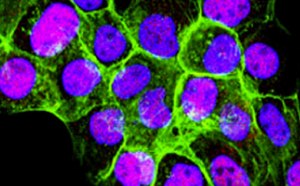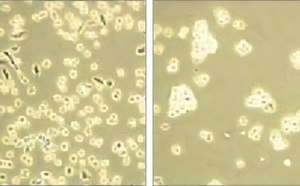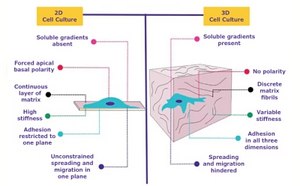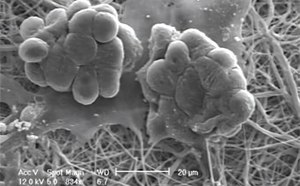3D Cell Culture
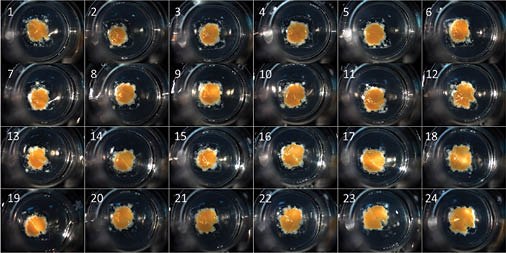
Traditional cell culture was developed on simple, nonporous two-dimensional (2D) surfaces, which facilitated the expansion of this vital technique across the life sciences. Because cells in vivo interact with their environment in three dimensions, 3D cell culture tools, reagents, and techniques have led to the creation of more predictive in vitro cell models for diverse applications and disciplines including cancer research, drug discovery, neuroscience, and regenerative medicine.
3D cell culture models may be generally classified into two principal categories based on method: 1) scaffold-based methods using hydrogels or structural scaffolds and 2) scaffold-free approaches using freely floating cell aggregates, typically referred to as spheroids. The choice of method depends principally on the nature of the cells themselves, but also on the goals and purpose of the 3D culture.
Featured Categories
We offer authenticated, contaminant-free cell lines, many in partnership with ECACC; critical tools for protein, antibody, virus, and vaccine production.
Enhance subculture with trypsin, collagenase alternatives. Gentle enzymes and non-enzymatic solutions offer broader culture possibilities.
Develop advanced cellular models: 3D hydrogels mimic physiological tissues. Opt for natural or synthetic hydrogels for precise attributes.
Advanced 3D cell culture scaffolds mimic ECM, offering predictive models for physiological processes.
Scaffold-based 3D Cell Culture Techniques
In scaffold-based culture, cells are supported in all dimensions either by an artificial structure or by a polymer network known as a hydrogel. These hydrophilic networks may contain over 90% water, and can be composed of animal-derived extracellular matrix (ECM) proteins, or are available as animal-free synthetic formulations. Cells are embedded in hydrogels to simulate the in vivo extracellular matrix.
So-called ‘hard’ scaffolds may also be created using specialized cultureware with fibrous or spongelike structures, often composed of biodegradable materials like polycaprolactone or optically-transparent polystyrene to optimize imaging. Though these manufactured supports are less like the in vivo ECM, they may enhance reproducibility and facilitate cell retrieval from the culture.
Scaffold-free 3D Cell Culture Systems
When cells are not grown on supports, they may form 3D aggregates called spheroids, which secrete their own ECM to become more like native solid tissues. Common examples include cancer tumorspheres, which enable the study of oxygen gradients and nutrient access in tumor formation. Spheroid culture is often favored for high-throughput compound screening in drug development and toxicology, where spheroids present more biologically-relevant models than 2D cultures. Spheroid culture can be achieved in diverse environments including low-attachment microplates, bioreactors, and microfluidics culture systems. Both scaffolded and scaffold-free systems enable interaction in all directions with substrate, other cells, and extracellular factors.
Advanced Applications of 3D Cell Culture
Advanced 3D cell systems allow researchers a hybrid between the accessibility of classical 2D cell culture techniques and the biological relevance of in vivo animal models, with fewer ethical concerns. Recently, the use of advanced 3D cell culture methods such as tumor spheroids, stem cell- and patient-derived organoids, and tissue engineering via 3D bioprinting with cells and bioinks have been implemented to more closely model in vivo cellular responses. Organoids derived from iPS cells have become commercially available for selected tissues, enhancing the potential for reproducibility and accelerating results versus lab-cultured organoids.
Visit our document search for data sheets, certificates and technical documentation.
Related Articles
- Bioinks enable 3D bioprinting of tissue constructs for drug screening and transplantation; select suitable bioinks for specific tissue engineering.
- The TrueGel3D® HTS Hydrogel Plate is a ready-to-use solution to easily establish 3D cell cultures using fully synthetic hydrogels in a simple and automation-compatible manner.
- 3D cell culture overview. Learn about 2D vs 3D cell culture, advantages of 3D cell culture, and techniques available to develop 3D cell models
- Hydrogela are the most widely used systems for 3D cell culture. Learn more about this technology (what are hydrogels? How to chose?)
- The extracellular matrix (ECM) and its attachment factor components are discussed in this article in relation to their function in structural biology and their availability for in vitro applications.
- See All (46)
Related Protocols
- Highly characterized cryopreserved human colonic organoids and a step-by-step organoid culture protocol for epithelial intestinal organoid differentiation from iPS cells.
- Adhere cells to solid substrates using poly-lysine, which enhances electrostatic interaction between negatively charged ions of the cell membrane and the culture surface.
- This gelatin coating protocol for cell culture applications offers information regarding types of gelatin, surface coverage concentration, and tips for optimization.
- Coating surfaces with laminin for culturing cells requires specific conditions for optimal results. Protocols for coating coverslips to culture neurospheres and general cell culture are included.
- How to stain organoids? A complete step-by-step protocol for immunofluorescent (IF) and immunocytochemical (ICC) staining of organoid cultures using antibodies
- See All (23)
Find More Articles and Protocols
How Can We Help
In case of any questions, please submit a customer support request
or talk to our customer service team:
Email custserv@sial.com
or call +1 (800) 244-1173
Additional Support
- Chromatogram Search
Use the Chromatogram Search to identify unknown compounds in your sample.
- Calculators & Apps
Web Toolbox - science research tools and resources for analytical chemistry, life science, chemical synthesis and materials science.
- Customer Support Request
Customer support including help with orders, products, accounts, and website technical issues.
- FAQ
Explore our Frequently Asked Questions for answers to commonly asked questions about our products and services.
To continue reading please sign in or create an account.
Don't Have An Account?